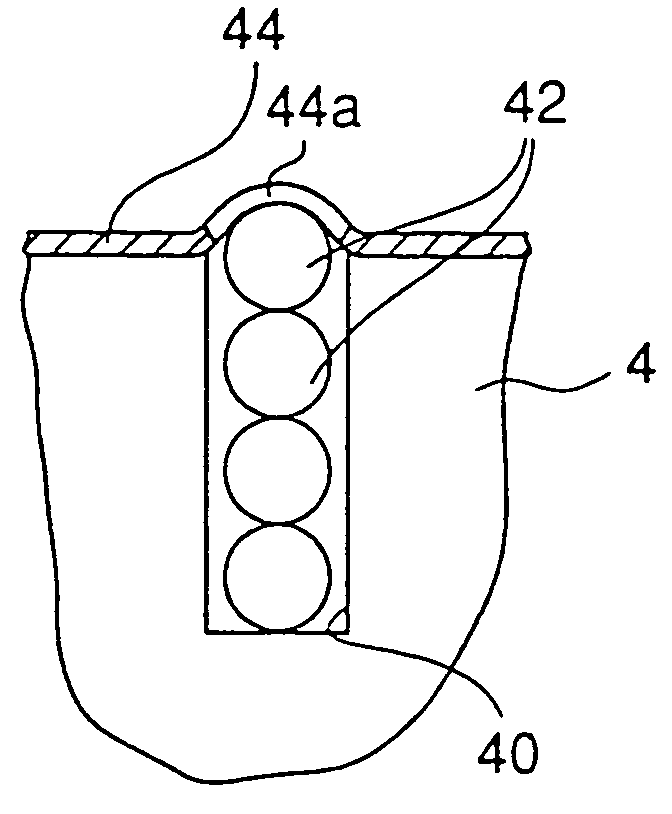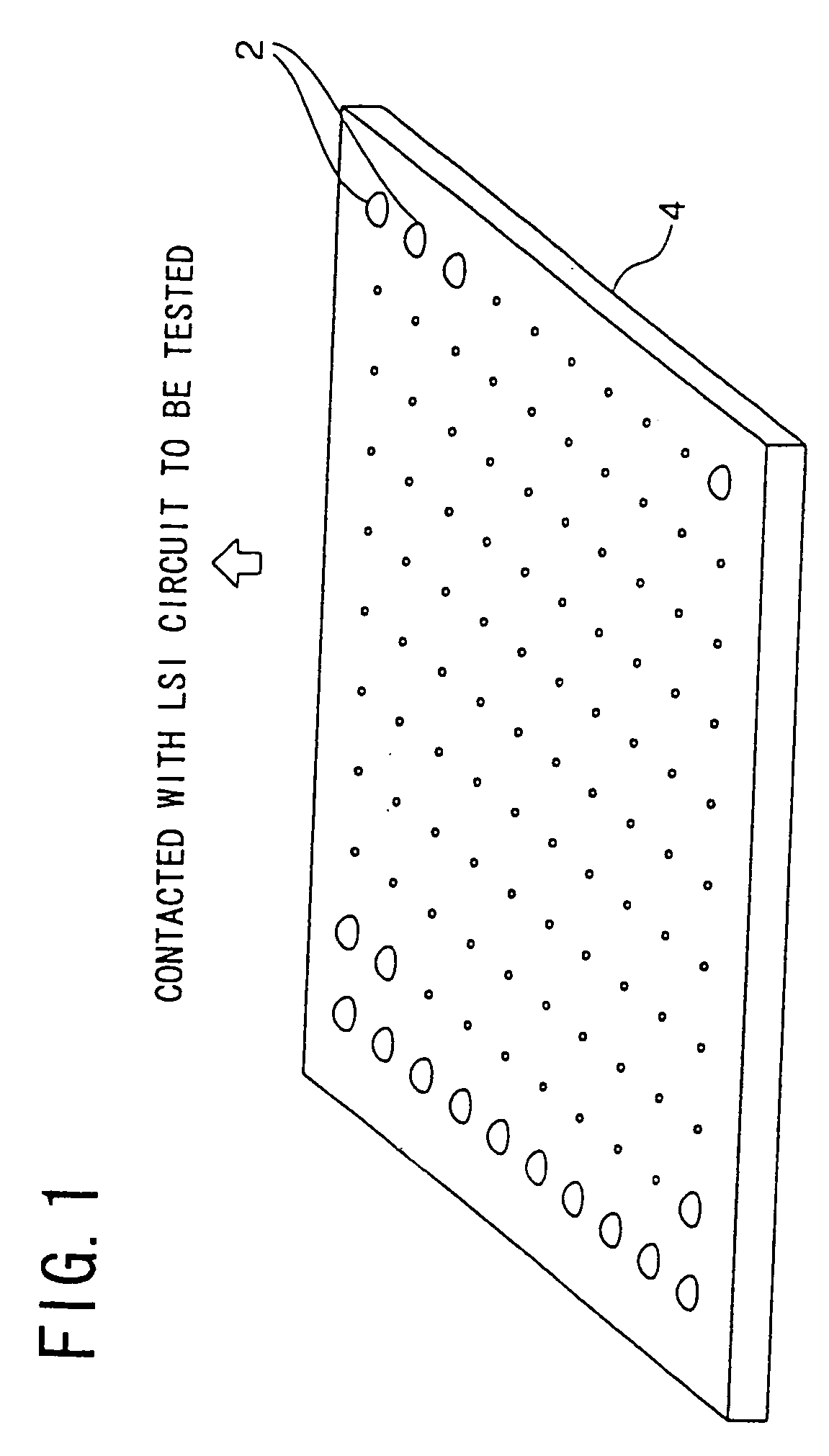Contactor having conductive particles in a hole as a contact electrode
a contact electrode and conductive particle technology, applied in the direction of individual semiconductor device testing, semiconductor/solid-state device testing/measurement, instruments, etc., can solve the problems of low flexibility of contact electrodes, high manufacturing cost of contactors, and difficulty in manufacturing contactors capable of contacting a plurality of lsi circuits at on
- Summary
- Abstract
- Description
- Claims
- Application Information
AI Technical Summary
Benefits of technology
Problems solved by technology
Method used
Image
Examples
example 1
[0205]The contactor according to the present embodiment was used as a contactor for a CSP (LGA type) in the form of a wafer. The CSP had pad terminals (electrodes) with a 500-μm pitch. Each of LSI circuits to be tested was a 10-mm-square LSI chip and had 360 terminals in a full matrix. The LSI chip had been formed in an 8-inch wafer. The wafer had approximately 250 LSI chips and 90,000 terminals in total.
[0206]A 500-μm-thick silicon wafer was used as the insulating substrate 70 of the contactor. The through holes 72, each having a diameter of 150 μm, were formed in this silicon wafer with a 500-μm pitch by a photo-excited electrolytic grinding method. The terminal 76 for circuit wiring was formed on one end of each of the through holes 72. The counterbore 72a was formed on the other end. Each of the through holes 72 was filled with the above-mentioned conductor by a liquid suction method.
[0207]The above-mentioned CSP in the form of a wafer was brought closer to the contactor prepare...
example 2
[0209]A contactor for testing the same CSP in the form of a wafer as the above-mentioned Example 1 was formed using SN-58Bi, which is a low-melting-point solder, as the conductor.
[0210]First, registration was performed between the contactor and the LSI chips in the wafer at a normal temperature. Thereafter, the contactor and the wafer were heated to 125° C. so that the conductors became semi-molten. Then, the bump portions of the conductors were bonded to the terminals of the LSI chips with a load of 1 g a terminal by thermo-compression bonding, successfully with an excellent contact.
[0211]In the present example, after the bump portions of the conductors were bonded to the terminals of the LSI chips, the contactor and the wafer were mounted on a prober, which was a test device. Then, the prober was connected to the terminals for circuit wiring formed on the insulating substrate of the contactor so as to carry out a functional test. Further, after the functional test, the contactor a...
example 3
[0213]A contactor having the same structure as the above-mentioned Example 1, except for a low-melting-point solder used as the conductor, was prepared. After the contactor was heated to 150° C. so that the solder became molten, the contactor was brought into contact with the wafer with a load of zero. This contact was performed in a nitrogen atmosphere to avoid forming an oxide film on a surface of the solder. Then, a temperature cycling test was carried out at temperatures from −25° C. to 125° C., providing the same result as a conventional method.
PUM
 Login to View More
Login to View More Abstract
Description
Claims
Application Information
 Login to View More
Login to View More - R&D
- Intellectual Property
- Life Sciences
- Materials
- Tech Scout
- Unparalleled Data Quality
- Higher Quality Content
- 60% Fewer Hallucinations
Browse by: Latest US Patents, China's latest patents, Technical Efficacy Thesaurus, Application Domain, Technology Topic, Popular Technical Reports.
© 2025 PatSnap. All rights reserved.Legal|Privacy policy|Modern Slavery Act Transparency Statement|Sitemap|About US| Contact US: help@patsnap.com



